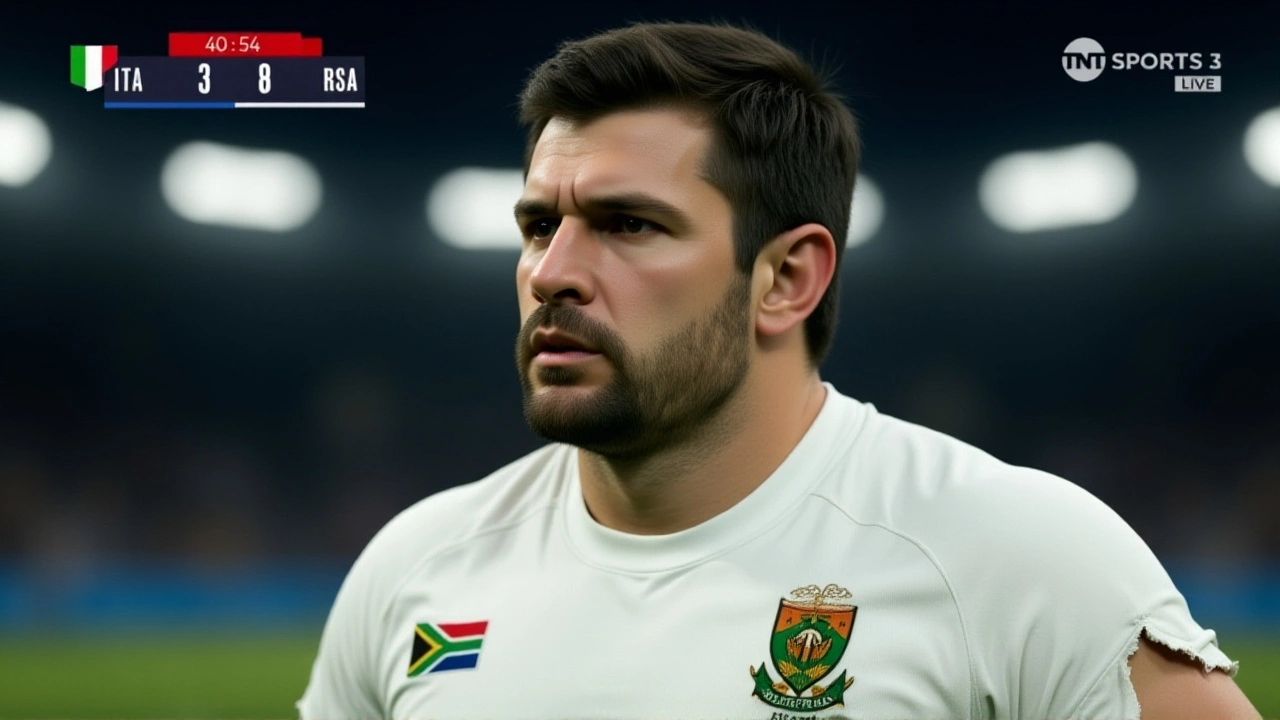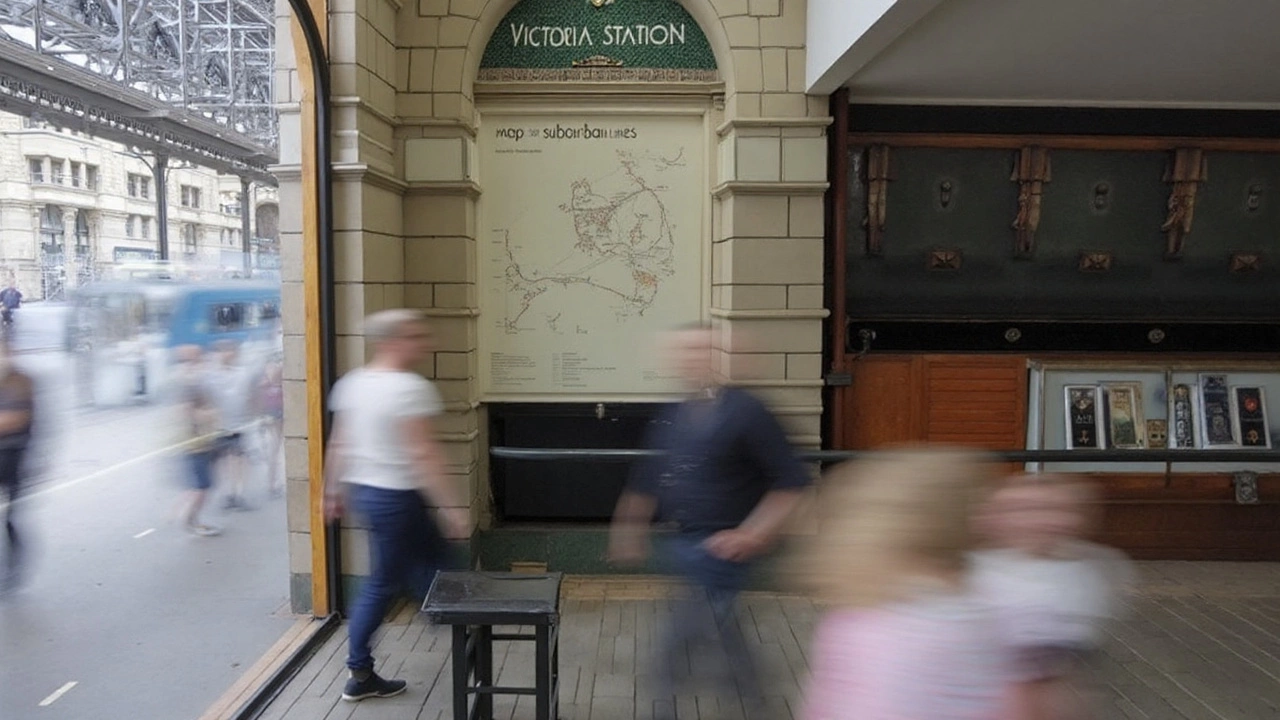
It wasn’t supposed to end like this. Scotland fought back from 17 points down, rallied with grit, and had the crowd on their feet — only to see New Zealand snatch victory in the final minutes. On Saturday, November 8, 2025, the New Zealand All Blacks defeated Scotland 25-17 at the Scottish Gas Murrayfield Stadium in Edinburgh, in a match that will be remembered for its emotional swings, tactical brilliance, and crushing disappointment for the home side. The game, part of the 2025 Autumn InternationalsEdinburgh, drew a sold-out crowd of 67,144 — the stadium’s full capacity — and was officiated by Australian referee Nic Berry.
A comeback that almost was
Scotland entered the match with momentum. Just weeks earlier, they’d crushed the United States 86-0, a statement win that raised hopes for a breakthrough against the All Blacks. But New Zealand, coming off a 26-13 win over Ireland in Chicago, brought their trademark composure under pressure. At halftime, the visitors led 22-3. The Scottish fans, usually loud and proud, were stunned. Then, something shifted. In the 48th minute, Scotland scored their first try. Then another. By the 67th minute, they were within three points — 22-19. The stadium roared. For the first time in years, a win over the All Blacks felt possible.But then came Damian McKenzie. The New Zealand All Blacks fly-half, often overshadowed by flashier stars, calmly slotted a penalty in the 72nd minute. It wasn’t pretty. It wasn’t spectacular. But it was ice-cold. The score: 25-19. A final surge from Scotland fell short. The final whistle blew. The crowd fell silent. The New Zealand All Blacks had preserved their 27-match winning streak against Scotland dating back to 1986.
Media reaction: Agony, deja vu, and dominance
The aftermath was a chorus of heartbreak and respect. The Guardian ran with: “Damian McKenzie edges All Blacks home after scare to crush Scotland comeback.” The Scotsman called it “Agony for Scots against All Blacks after second half fightback.” Sky Sports highlighted the 17-point comeback — the largest ever by Scotland against New Zealand — only to note it ended “in vain.” Even BBC Sport, typically measured, admitted: “Scotland fall short as New Zealand preserve record.”For Gregor Townsend, Scotland’s head coach, it was another bitter chapter in what rugbyworld.com called “a November to forget.” His team showed heart, but also exposed gaps in defensive structure and set-piece execution. The loss leaves Scotland’s autumn campaign with two wins (against the USA and Tonga) and two losses (to New Zealand and South Africa), a mixed bag that offers little clarity heading into the 2027 World Cup cycle.

Global viewing numbers and broadcast details
The match wasn’t just a local event — it was a global spectacle. In the UK and Ireland, TNT Sports and Discovery+ drew record streaming numbers, with coverage beginning at 1:00 p.m. GMT. Subscribers on Sky, Virgin Media, and BT TV tuned in en masse. In New Zealand, Sky Sport NZ held exclusive rights, with fans enduring a 4:10 a.m. kick-off on Sunday, November 9. Day passes sold out within hours. In Australia, Stan Sport reported a 42% increase in viewership compared to last year’s Autumn Internationals. In the U.S., Peacock saw a surge in Premium subscriptions — many users upgrading from the ad-supported tier to access the match.Free-to-air options were limited. RTÉ Player in Ireland, S4C Clic in Wales, TF1+ in France, and RaiPlay in Italy offered only their own national team games. Scotland fans without access to TNT Sports or Discovery+ were left scrambling for unofficial streams — a reminder of how uneven global rugby broadcasting remains.

What this means for rugby’s future
The Autumn InternationalsEdinburgh was more than a series of fixtures — it was a stress test for emerging teams. Scotland proved they can compete, but not yet win, against the elite. New Zealand, meanwhile, demonstrated why they remain the gold standard: poise under pressure, clinical finishing, and an uncanny ability to close out tight games.For Scotland, the path forward is clear: rebuild the defensive line, invest in depth at fly-half, and find a way to win the mental battle. The All Blacks didn’t dominate this match — they survived it. And that’s the difference.
The next test for Scotland comes on Sunday, November 23, 2025, at 1:40 p.m. GMT, when they face Tonga — also at Murrayfield. A win there might soften the blow. But for now, the question lingers: when will Scotland finally break through?
Frequently Asked Questions
Why did Scotland lose despite a 17-point comeback?
Scotland’s comeback was historic — the largest ever against New Zealand — but they couldn’t close the gap in the final 15 minutes. Key errors in the scrum, missed tackles in the midfield, and a lack of cutting edge in the final third cost them. New Zealand’s Damian McKenzie’s penalty in the 72nd minute proved decisive, and Scotland’s attack lacked the precision to convert pressure into points.
How many times have New Zealand beaten Scotland in rugby?
New Zealand has won 27 consecutive matches against Scotland since 1986, with Scotland’s last victory coming in 1983 (24-18 in Edinburgh). Overall, the All Blacks have won 48 of their 51 meetings with Scotland, with two draws. The 2025 result extended their longest winning streak in international rugby against any single nation.
Where can I watch future Scotland matches in the U.S.?
In the U.S., all Scotland matches during the 2025 Autumn Internationals are streamed exclusively on Peacock. Viewers need either the $10.99/month Premium tier or the $16.99/month Premium Plus tier. The match against Tonga on November 23 will be available live, with replays accessible for 48 hours after kickoff.
Why is the match time so late for New Zealand viewers?
Edinburgh is in the GMT time zone, while New Zealand operates on NZDT (UTC+13). When it’s 3:10 p.m. in Edinburgh on Saturday, it’s already 4:10 a.m. on Sunday in New Zealand. This is standard for international fixtures — New Zealand fans often watch matches live during the night or early morning, a sacrifice made for the chance to see the All Blacks play abroad.
What’s next for Scotland’s rugby team?
After facing Tonga on November 23, Scotland will begin their 2026 Six Nations campaign in February. The coaching staff will focus on tightening defense and developing younger players like fly-half Blair Kinghorn and lock Ben Healy. A win over Tonga would offer some redemption, but the real test comes next year — when they face New Zealand again in the June internationals.
Was the attendance record broken at Murrayfield?
No, but 67,144 was the stadium’s full capacity — the highest attendance for a Scotland vs. New Zealand match since 2018. The record remains 67,144, set in 2018 and matched in 2025. The sellout reflects the enduring appeal of the All Blacks in Scotland, where rugby passion runs deep despite decades of defeat.




